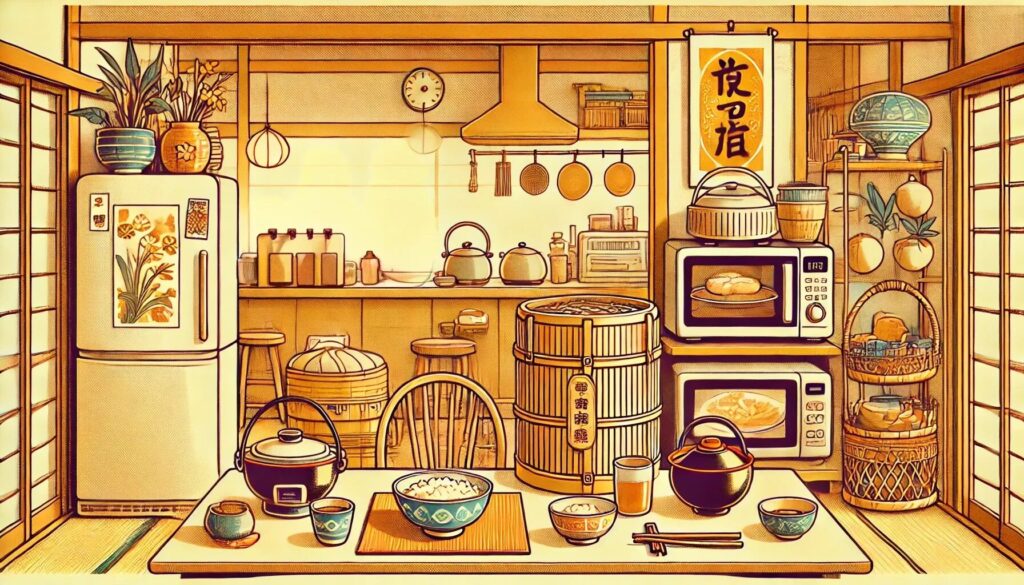1. Introduction
Japanese households are evolving into modern lifestyles that emphasize efficiency and practicality while maintaining traditional family values. While household management styles are diversifying with the increase in dual-income families, outsourcing of household chores, and introduction of technology, some traditional values and customs remain deeply rooted. This article explores the modern Japanese household where tradition intersects with efficiency.

2. Practical Points and Examples
- **”Remnants of Traditional Family Values”**Japanese households still show traces of traditional gender roles where “men work, women manage the home.” Especially in older generations, there remains a strong culture of family gatherings for ceremonial occasions and New Year’s celebrations, maintaining respect for ancestors. Traditional values also influence daily life, such as incorporating seasonal elements in meals and keeping Japanese-style rooms with tatami mats as the center of the home.
- **”Modern Households Pursuing Efficiency”**Meanwhile, with the increase in dual-income households, there is a growing trend toward efficient home management. For example, utilizing robot vacuums, meal kits, and online shopping helps reduce time spent on housework and shopping, allowing for better work-life balance. Digital tools are also being used for children’s education, advancing household efficiency.
- **”Fusion of Tradition and Efficiency”**Modern households are focusing on lifestyle patterns that merge tradition with efficiency. For instance, many families still prioritize gathering around the dinner table during Obon and New Year’s holidays to enjoy traditional dishes, despite busy schedules. Additionally, combining traditional Japanese design elements with the latest smart appliances allows for maintaining a traditional atmosphere while living efficiently.
- **”Background of Diversifying Family Structures”**The changing shape of families stems from diversifying values and lifestyles. With the rise of nuclear families, single households, and dual-income families becoming commonplace, household structures are no longer bound to a single model. For example, there’s an increase in arrangements like “living close enough for soup to stay warm” where families live near their parents while respecting individual lifestyles, and “tanshin-funin” households where family members live separately due to work commitments.
3. Points to Note and Tips
When balancing tradition and efficiency, it’s essential to clarify household priorities. Discussing with all family members about which specific events and daily customs to maintain helps achieve household management that satisfies everyone. Also, when utilizing external services and technology, it’s important to maintain balance without becoming overly dependent, considering which aspects to handle personally.
4. Summary and Next Actions
Japanese households are evolving into new forms that combine tradition with efficiency. In your next family discussion, try exchanging opinions about which traditions to preserve and which areas to make more efficient, exploring a household style that incorporates everyone’s values. A household management approach that intersects tradition with efficiency will become the foundation supporting the happiness of all family members.




